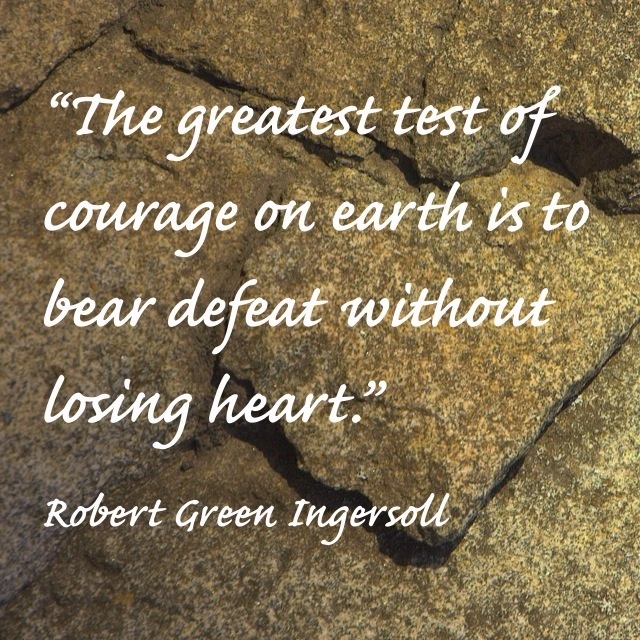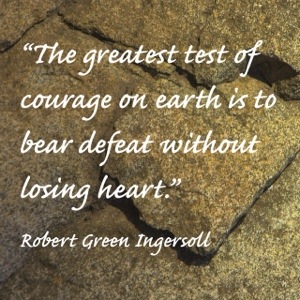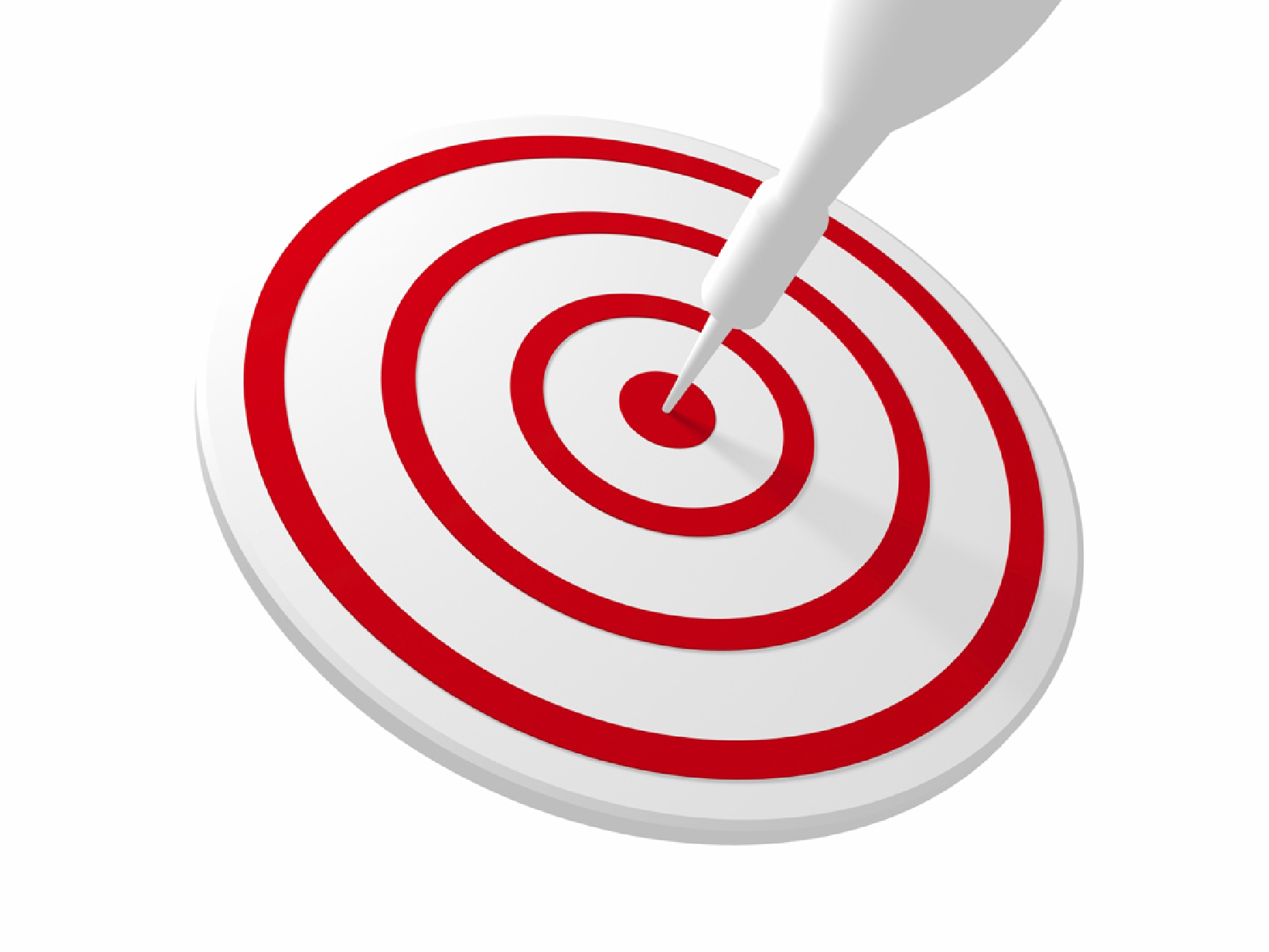Posts Tagged: Path to Peace
How Meditation Can Affect Alpha Rhythms in the Brain – Re-post
This is a re-post from an email sent to me from Luminosity.com by Pam Zhang.
http://www.lumosity.com/blog/meditation/


Who else wants God to stop testing them? – A Path to Peace.
The good news is that the Divine One does not test us – at least that’s my take. Allow me to explain.
God is Love. Love has no need to test — it believes in you completely. God does not lead anyone into temptation, into failure nor into something you are not prepared to handle.
Our master teacher Jesus tells us that God does not judge.
We are all equal in the eyes of the divine. There are no favorites.
God granted us free will. Not kinda-free will, not sorta-free will, not partial-or-when-I-feel-like-it-free will. To say that God has put us in a situation goes against what I understand the Christian Scriptures tell us. Feel free to comment on this or any part of this post below if you have a different interpretation or understanding you would like to share.
The only one testing you is… well, you. Testing is a human concept for the demonstration of understanding. If you believe that the Divine is capable of knowing what is in your heart, then would any test be unnecessary to satisfy God? The actions of Jesus do not appear to support the idea that God tests us. His example appears to be to the opposite. When one or more of the disciples were unsteady in principles, his comments were more around: “Have you no faith?”, “Where is your faith?” The tests were always about them and by them. It was seemingly about their perception of the events combined with their personal faith. Did Jesus say, “this is The Father’s test for you”
We come into alignment with new Truths when we are ready, and if it feels to you like a test, it could be that you are still in a stage where conscious effort is required to apply the new understandings. If it’s not second nature to you yet, don’t sweat it. Be grateful for the opportunity to practice and move through it with grace using the fullest expression of the Truth that you can at that moment.
We may think of it as a test merely because the new awakening or the condition is something that is freshly in our awareness. The opportunities have been there all along, we are just now awake enough to see them. We might think of it as a test because we lack faith in our own understandings. If we doubt ourselves, there is room for some false perception of failure. With the idea of failure in our consciousness, we may unconsciously go looking for opportunities to practice our new understandings. Perhaps ego may be at the heart of this — putting us into situations where we can fail in our growth so ego can survive.
We live truths to the extent of our willingness to do so. Sometimes, for whatever reasoning, we are not willing to step fully into a principle. So we step into a situation where that Truth is to be expressed, we embrace it halfheartedly and the outcome isn’t as wonderful as we would like. Much like when we were a child and were asked to clean our bedrooms. If you weren’t into doing it, and how many of us really had a ‘passion’ for cleaning our rooms, the end result my have been “okay” on the surface but we knew in our hearts we could have done more. We just wanted to get on with it and get back to play time.
To my way of thinking, “test” is merely a label we apply to events in our lives where we feel unsteady. Events where we have a chance to practice understandings that we feel are not our strongest. Have you noticed, when applying a principle becomes second nature, you gradually stop calling it a test? What changed? Well you did, at the very least, your point of view changed. You decided to stop applying the label. If we get to make the call on when it stops being a test, then is it really God submitting the test?
So here is your take away:
We here at Empower-Yourself.com always honor your perceptions on your path. It is YOUR path and you are your own best guide and you certainly get to chose how to walk it. Regardless of your views on life’s “tests”, the ideas below may assist you in bringing personal empowerment and peace into your life.
To live more fully empowered: Stop labeling events as a test. If you are seeing it as a test and have the mindset of “this is for a grade, I better do good”, then you are coming from a place un-empowered – perhaps even a place of fear. If you “do the right thing” because you have chosen to, now you are living empowered. I suspect we all understand how much we prefer to do what we want to do over what we have to do. Feel the difference? Coming from the empowering space makes room for joy, passion and a life of happiness in everything you are doing.
To live more fully in peace: release the idea that events are some test that was manufactured for you and see it for what it is. Just another event in the continuous, unbroken and overlapping string of events we call life. Work through it with the integrity you have and all the Love you can, and you will come through the other side with the highest and best outcome possible to you at that moment.
A Path to Peace – Moving Past the Attachments.

So far in our Path to Peace series we have had a look into what an unhealthy attachment is and how we can spot them. Seems the next logical step is moving past any attachments that lead to suffering and towards a life of peace.
We have all heard the “Go with the flow” attitude and “Let go and let God”, but often we miss the actual letting go part. We toss the issue into the fire only to reach in, grab the hot embers and get burned in the process. We want to let go but just won’t step deeply enough into faith to let that happen fully. It’s our attachments to the outcome that cripple us from releasing fully into the flow of the Divine. The Loving Spirit of God wants to provide for us all that we need and desire. God wants us to be at peace and filled with joy!
Great spiritual masters as well as today’s modern mental doctors have professed the benefits quiet contemplation can have on the mind and body. Master Teacher Jesus tells us in scriptures to enter the inner chamber and from there, pray in quiet. Something almost magical happens when we enter a space of internal silence. With gentle practice we begin to quiet the mind, calm the body and awaken the Perfect Consciousness that resides with in us and is patiently waiting for us to allow it to reveal. This is a place of consciousness where we commune with God, the Divine, Spirit, Allah, Jehovah…
From this place we learn it is safe to ask the tough questions and get the answers that can move us into the next level of our being. It is from this space of silence that we can look deep within, and with an intention of being honest with ourselves, find our attachments and seek the answers to letting go.
Many of our attachments are deeply programmed because we have hauled them around with us for decades and they have become automatic responses and they originate from all areas of life
- From our parents who yelled and threw anger in our direction when we did not meet their expectations and so we have learned to do the same.
- Lack of approval from those who we viewed as authoritarian such as teachers or care-givers so we do improper things to get approval.
- Mainstream media such as commercials that insist we must look a certain way to be beautiful and movies that show us how tough a man should be.
- Songs we might hear teach us that we must feel suffering when we lose a valued relationship and that it is okay to take revenge when it happens.
- Some musical expressions try to teach us to hate authority and the law.
- The examples of friends and family who showed us that they hated their ex-spouse so we assume we should do the same.
- Some are so deeply permeated in tribal thought that we may be challenged daily or hourly to avoid regressing into our old ways. “My religion is the only right religion” or the condition of Political Hypochondria that has infected our world are both good examples.
Day 1. Taking the first step – discovery: Here is an exercise I use. When a situation brings up stress in my life (in whatever form that might be) I go inside and look for where in my being the stress was triggered, what kind of stress is it – fear, anger, resentment, disappointment, disgust? With clarity on the emotion, I am better prepared to drill into the root attachments.
Day 2 – 3 Investigation: The goal here is to take your awareness of the emotion and allow it to guide you to find what you are attaching to. Being complex individuals, we each respond to our attachments in our own way, so you will have to use your own life experiences to help you in the process.
Some tips that may help:
- Recall similar situations where the same emotional response surfaced. What is common between them?
- Fear is sometimes masked as anger. For instance the fear of losing something might result in anger surfacing. It looks like anger, might even feel like anger but something in the pit of your stomach tells you it’s fear. Fear of judgement can manifest as anger when a person lashes out from a comment or remark they find demeaning.
- If your anger is a fight or flight response, there is a good chance it’s based in ego. Something in the ego feels the need to defend or protect itself so it does so with a show of superiority through aggression.
- Sadness can be a sign of grief and grief can be an indication of loss. Look for what you “lost” in the situation and this will lead to finding the attachment.
- Fear of loss may bring jealousy – an example of multi-layered attachments. Fear and loss are two separate yet connected issues. Each can exist without the other, but one can trigger the other. Loss issues arise from attachment to some “thing” in your world and fear is based in a perceived lack of safety or security. A jealous lover may be attached to control (security) in the relationship (the “thing”)
When I first began healing attachments it took some time to get my head fully into the action of investigation. After practice, when the emotion is discovered, the attachment often reveals itself right away but sometimes it ,might be a little stubborn and I’ll have to “sit” with it for a while. My method is to hold the “intention” to discover and heal the attachment, but I won’t actively pursue it. In its own perfect time it reveals itself. So if the attachment does not come to you, that’s perfectly fine. Don’t let yourself get attached to finding the attachment! Let go of any feeling of need to find it. In time it will reveal itself. Plant the right seed, nurture it and it will come to bear fruit.
Day 4 and on. Once the attachment is uncovered, the release work begins.
Giving yourself permission to heal is critical. The suffering may be so deeply integrated into your life that you have resistance to to letting it go. You may feel like you don’t know any other way to live than the way you are living now. In other words, you are attached to the suffering that comes from attachment!
- Can you allow yourself to be okay with not being okay? This is to say that you give yourself permission to accept that you have room for healing. Without this, you will experience persistent resistance to change.
For some it may have to begin with forgiveness work.
- Forgiveness is for the benefit of self first. Carrying resentments and pain towards others does nothing to the other person, but instead toxifies our own life. Refusing to forgive is denying yourself the power to make a positive change – it is much like drinking a poison and expecting the other person to suffer. Give yourself permission to put down the burdens and move on.
- A lost friendship from misunderstandings may require forgiving yourself for your part in the exchange. This is not to say you should dwell on your being “right”, but coming to a realization of how you may have handled it better and forgiving yourself for your past actions. Once you clearly see your part in the matter, you are far more prepared to forgive your friend. Look for the log in your eye before trying to remove the splinter from theirs.
- Childhood related issues such as abuse, bullying and neglect may have serious effects on adulthood. One of the joys of attachment work is the freedom to live in the moment rather than dragging around the past. Our past prepares us, it does not define us. As our own best guides on our paths, we are free to change our minds and make the choice to live in the now, free from the illusionary bondage of our past.
You may work through the grief process when releasing long held attachments that were falsely associated with their personal view of their identity.
- Brea the Beekeeper: “I am a beekeeper and was fired” – Brea, is not realizing that the truth of who she truly is as a loving expression of the divine – a spiritual being having a human experience. Beekeeper is a job, not her true identity. Releasing the attachment to the job as her identity might be difficult for Brea as she deeply feels she has lost a part of herself. By freeing from the attachments of the job title as identity, she is now freed to discover greater truths and higher possibilities in her next career. The divine never closes a door without leaving another one open. Attachments can blind us from seeing the open doors that are right there in front of us.
- My mother was an addict and I was withheld affection and stability as a child. When sober, she was engrossed in her distractions and as the day progressed so did her state of intoxication. I and a few of my siblings were born with physical defects as a result of the daily toxins she ingested during her pregnancies. My upbringing was filled with family anger and resentment. While my father and my siblings did their best to be a stable presence in my life it didn’t overcome the repercussions of the anger. I used to identify myself with being the child of an alcoholic. In school it served me in an unhealthy way. Counselors first, then teachers would give me a break when homework was late because “you know… poor little John’s mom is a drinker.” I learned very early on that this would get me out of certain things at school. In my mind, it was the perfect excuse! Unfortunately, I fully bought into the story and gradually identified with it. With my attachment to it, I fell further into self-pity, self-doubt and low self-esteem. Eventually, I grew to understand that this past did not have to define me. I remember, as I began the release work, I would go through typical stages of grief – the sadness, the bargaining with God, emotional swings, and more. While I have come a great distance, over two decades later, from time to time I still get opportunities to work with this.
Like any skill, practice makes better. The great joy in this practice is that you reap amazing rewards in the quality of your life. You blossom, your relationships sweeten and peace emerges where once there was suffering. Embrace your past for it has brought you to where you are today and prepared you for your new, fresh and exciting life that is unfolding before your very eyes right here, right now.
Blessings



 It is fairly easy to spot attachments once their symptoms are in your awareness.
It is fairly easy to spot attachments once their symptoms are in your awareness.